Today still brings several wearable power management chip solutions
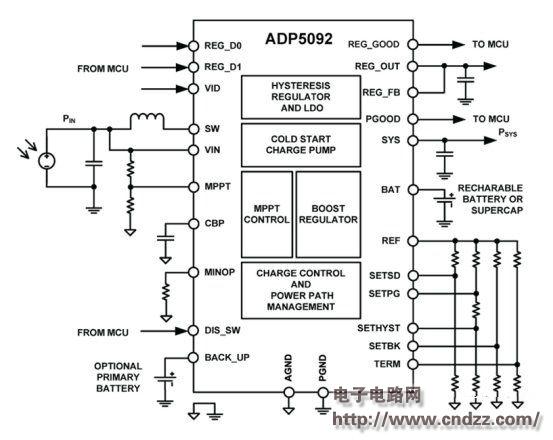
First, ADI battery charger IC series
ADP5092 integrated energy harvesting nanoscale power management
The ADI battery charger IC family supports a wide range of applications including lithium-ion battery monitoring, PV cell energy harvesting, industrial monitoring, wearables and other portable devices. The product portfolio features constant current/constant voltage linear charging for applications such as single Li-Ion batteries, stacked Li-Ion monitoring, and battery isolation. Its flexibility allows these applications to work in multiple systems.
The ADI Battery Charger IC not only supports battery monitoring and management for wearable products, but also for a wide range of applications including TEG energy harvesting, self-powered wireless sensor devices, electric and hybrid vehicles.
The following is the ADI battery charge management IC selection table:

Second, TI to achieve scalable power management solutions Wearable devices require advanced power management to achieve long-term operation of the battery in the case of a normally open function. In addition, the device requires a small rechargeable battery and supports a small size design. Here we use TI's bq51003 Qi standard wireless receiver and bq25120 battery charging IC to achieve wearable product power management.
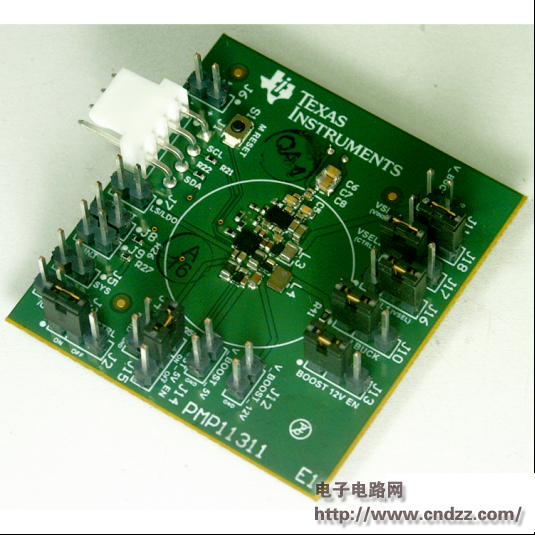
PMP11311 Wireless Charging Management Power Reference Design This solution can be customized for active monitors or smart watches, designed with Li-Ion battery chargers and low quiescent current (Iq) DC/DC buck and boost conversion for PMOLED displays For heart rate monitor (HRM) boost converters and a second configurable low Iq DC/DC buck, wireless charging input, highly configurable battery management solution. The specific content of the plan is as follows:
Bq25120 simplified circuit diagram
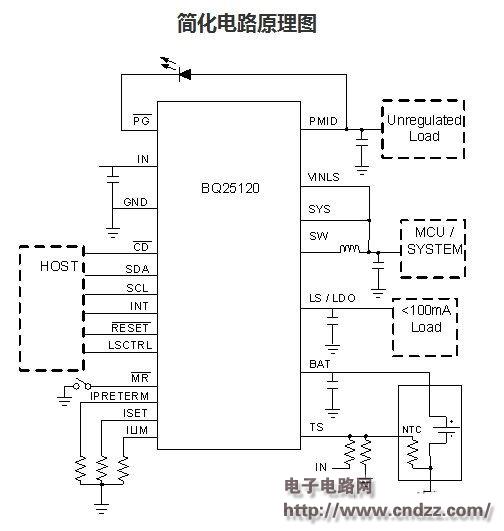
The bq25120 is a highly integrated battery charge management integrated circuit (IC) that integrates the most common functions of wearable devices: linear chargers, regulated outputs, load switches, timer resets, and battery voltage monitors. The integrated buck converter is a high efficiency, low IQ switch with a DCS-Control topology that extends light load efficiency below 10μA load current. The converter has low quiescent current during operation and shutdown to maximize battery life. The device supports charging currents from 5mA to 300mA. Input current limit, charge current, buck converter output voltage, LDO output voltage and other parameters can be programmed through the I2C interface.
The device charges the battery in three stages using a standard Li-Ion charging profile: pre-charge, constant current, and constant voltage. The device includes a voltage-based JEITA-compatible battery pack thermistor monitoring input (TS) that monitors battery temperature and automatically changes charging parameters to prevent the battery from charging at temperatures outside its safe temperature range. The charger is optimized for 5V USB input and can withstand 20V line transients. The buck converter is powered by input or battery. When in battery only mode, the device can be operated from a battery with a voltage up to 4.65V.
List of related devices:
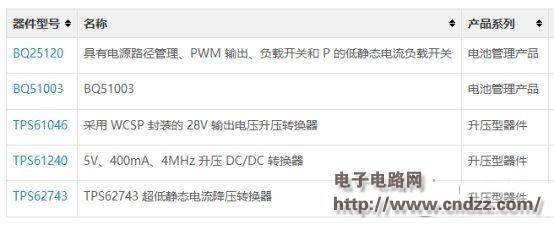
The wireless power management solution can be applied to smart watches and other wearable devices, fitness accessories, health monitoring medical accessories, rechargeable toys and other devices.
Third, Cypress Cypress lithium battery charge management IC
MB39A134 lithium battery charge management IC circuit pin diagram
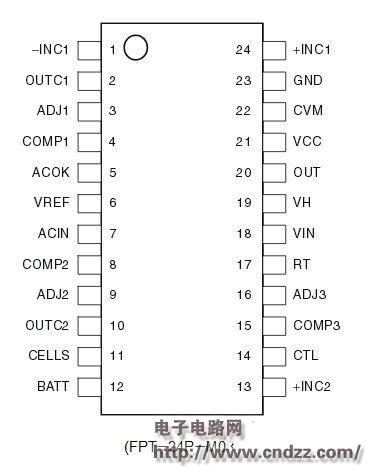
The MB39A134 is a pulse width modulation (PWM) DC/DC converter IC for Li-Ion battery charging. The chip can control the charging voltage and charging current separately, suitable for buck conversion. The MB39A134 has an AC adapter detection comparator built into the control section of the DC/DC converter to control the voltage supply to the system. Because the chip has a large input voltage range and low power consumption during standby, it can control the charging voltage and charging current with high precision. It is most suitable for built-in lithium-ion battery chargers such as notebook computers.
Features • Support for 2, 3 and 4Cell battery packs • Built-in two constant current control loops • Built-in AC adapter detection function (ACOK pin)
• Charging voltage setting accuracy: ±0.7% (Ta= -10° C ~+85° C)
• The charging voltage (4.20 V/section, 4.10 V/section) can also be set without an external setting resistor.
The charging voltage can also be set by an external resistor. • Two high-precision current sense amplifiers (±1%) are built in (when the input voltage difference is 100 mV)
(±5%) (when the input differential pressure is 20 mV)
Input compensation voltage: 0 mV (Current Amp1)
:+3 mV (Current Amp2)
• The charging current can also be set without an external setting resistor (RS = 20mΩ: 2.85 A)
The charging current can also be set by an external resistor. • The switching frequency can be set by an external resistor (built-in frequency setting capacitor): 100 kHz ~ 2 MHz
• Charge stop function with built-in low VCC • Standby (ICC = 6μA typical), only AC adapter detection function works • Built-in VH regulator to reduce Qg loss of P-ch MOS FET • Package: TSSOP-24
Applications • Built-in chargers such as laptops • Portable terminals, etc.
MB39A134 block diagram
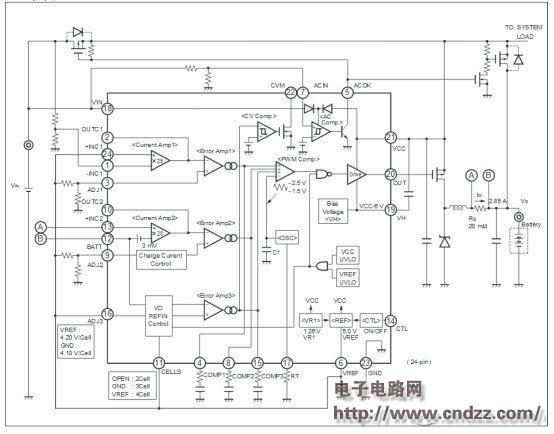
Projector speaker:
Projector speaker is a kind of speaker unit which is used for multimedia devices. Projector speakers have loud sound, wide frequency response range and rich bass.
Our main Multimedia Speakers are full ranges speakers units:
1) From the diameter: we have speakers in 1" ~ 3".
2) From the power output, we have speakers of 2W ~ 15W.
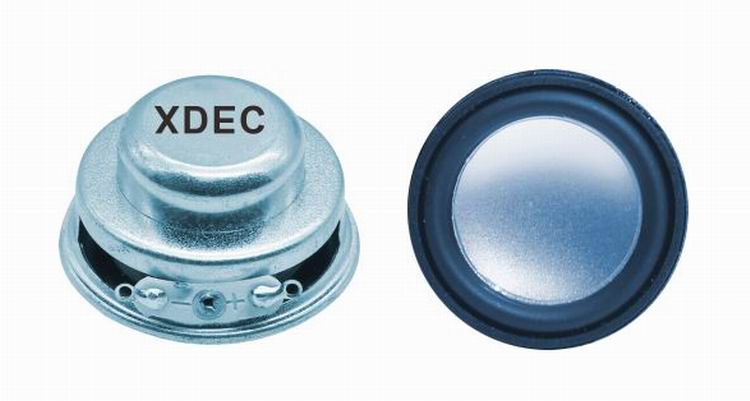
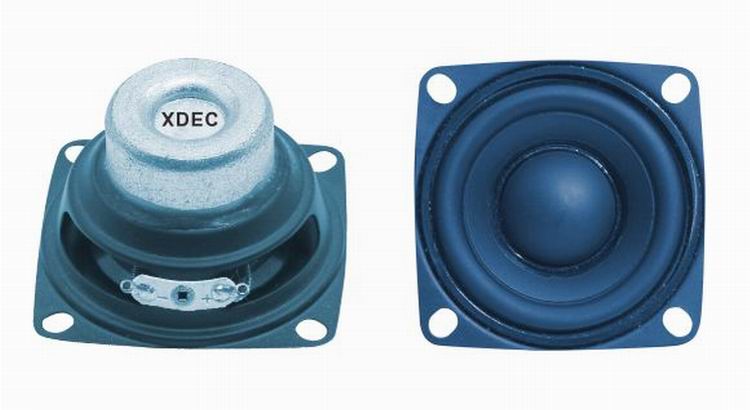
FAQ
Q1. What is the MOQ?
XDEC: 2000pcs for one model.
Q2. What is the delivery lead time?
XDEC: 20 days for normal orders, 15 days for urgent orders.
Q3. What are the payment methods?
XDEC: T/T, PayPal, Western Union, Money Gram.
Q4. Can you offer samples for testing?
XDEC: Yes, we offer free samples.
Q5. How soon can you send samples?
XDEC: We can send samples in 3-5 days.
Projector Speaker,Mini Projector Speaker,Portable Projector Speaker,Column Projector Speaker
Shenzhen Xuanda Electronics Co., Ltd. , https://www.xdecspeaker.com